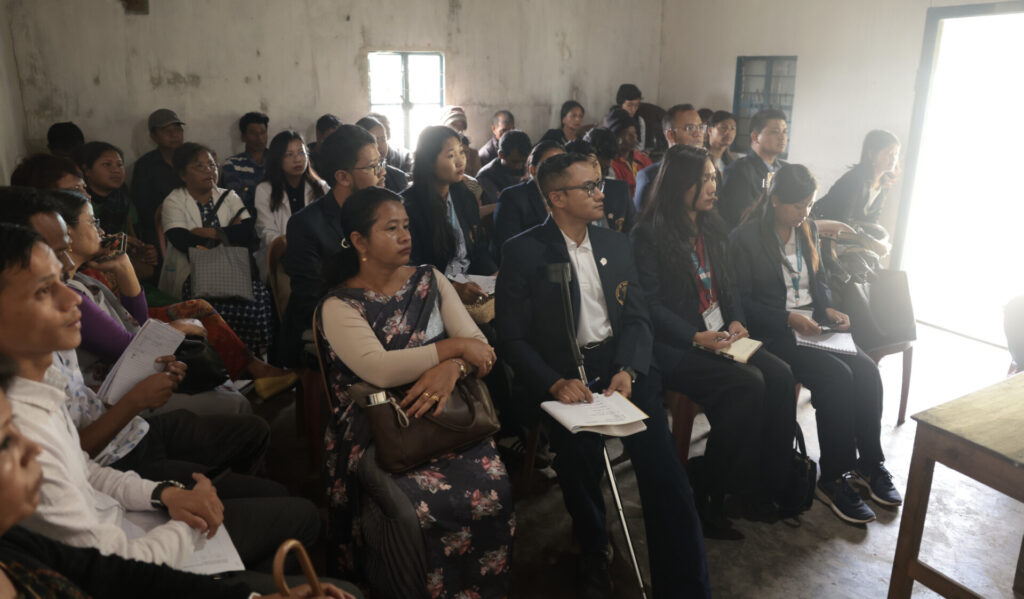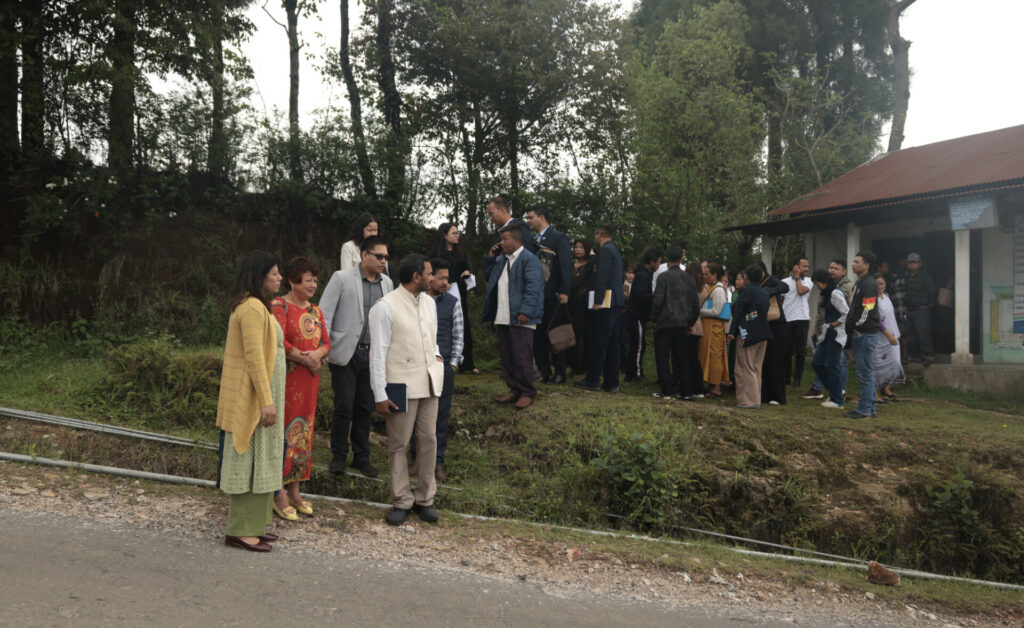On 23rd May 2025, HDLP facilitators visited Rngi Shillong, one of two villages in Mylliem Block highlighted in the programme. While its neighbor, Rangbihbih, showcased relatively strong socio-economic indicators—rainwater harvesting systems and active SHGs—Rngi pointed to a very different reality on the ground:
- Over 60% Home Births: During informal interviews, it became clear that most women still chose—or were compelled—to deliver at home. The nearest PHC, though equipped with reliable medical staff, remained underutilized because families lacked clear information on the benefits of institutional delivery.
- High Fertility Rates & Low Birth Spacing: Several households reported having four or more children within a span of 6–8 years. There was minimal awareness of family-planning options; traditional birth attendants remained the default choice, in part because inter-pregnancy counselling had never been communicated in a way that resonated.
- Aadhar Enrollment Below 50%: A potentially transformative document, Aadhar, was absent in nearly half the homes visited. Without it, many villagers could not access nutrition assistance or health insurance. On-the-spot, HDLP facilitators and health workers began door-to-door Aadhar registration drives, aiming to reduce that gap before the week’s end.
- Low Immunization Coverage & Mistrust of Vaccines: Field observations confirmed that several children—particularly those under two years—had missed critical immunization dates. Misinformation around side effects fueled hesitancy. HDLP teams initiated IEC sessions under the village banyan, leveraging simple charts that mapped “vaccination → school admission → free JNV education” to demonstrate long-term benefits.
- Minimal SHG Presence: Only one Self-Help Group operated in the entire village, leaving a glaring void in women’s economic participation and social support. Facilitators identified eight women who expressed interest in forming a new SHG—starting with financial literacy modules scheduled for the following week.
- Adverse External Influence: Neighbors from outside the block occasionally spread rumors—“government schemes are just for show”—which reinforced local apathy. HDLP volunteers met with community elders and local faith leaders to begin dismantling these narratives, laying the groundwork for more trust in future initiatives.
On-the-Spot Actions:
- IEC & Counselling: As soon as gaps were identified, teams held mini-sessions explaining immunization schedules, institutional delivery schemes, and SHG formation processes.
- Inter-sectoral Coordination: A joint meeting between Health, Education, and Social Welfare line departments was convened under a shaded kiosk, ensuring that each family’s case—whether for Aadhar, nutrition support, or childcare—had a clear next step.
- Distribution of Health Contacts: ASHA and ambulance phone numbers were written on village notice boards, along with scheduled PHC visit dates.
- Rebranding Aadhar Awareness: HDLP facilitators introduced the term “Ka jingpynithuh” (Awareness Card), emphasizing that Aadhar is not just an ID but a gateway to entitlements.

